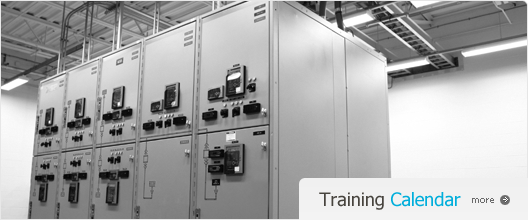
|
|
|
Program
Schedule
Date: To
be announced very soon
|
|
- Codes, standards and regulations For details, please visit Here
Unit 1: Principles of Transmission For detailed content, |
DD102 is an intensive 5-day course that focuses on designing a structured
cabling system. You will design telecommunications spaces, horizontal
and backbone distribution systems, respond to and bid an RFQ and select
media. Effective strategies utilized to enhance your learning experience
include case studies and structured application exercises using modernized
blueprints with solutions based upon real-world conditions.
BICSI recommends 125+ hours of self-study (over a period of 5-weeks) following the formal training course (DD102).
Design Basics
Recommended design sequence, cabling infrastructure layout, terms &
definitions, overview of standards & codes.
Designing Telecommunications Rooms
Determining type number & size according to usable floor space, specifying
power, lighting & floor loadings.
Designing Horizontal Distribution Systems
Pathway sizing & routing considerations. Design rules for under-floor
duct, cellular floors, conduit, & access floors. Use of ceiling distribution
including ceiling zones method. Application exercises; design of under-floor
conduit system & comparison with overhead plenum rated method. Specifying
copper & fibre optic cabling complete with documentation methods.
Examples of cable management during installation & cross connection.
Installation sequence for zoned systems.
Designing Backbone Systems
Backbone design & planning, media selection options (copper versus
fibre), colour codes, backbone pathways & spaces, sleeves, slots &
conduits, planning & designing cable pull boxes, fire stopping, campus
backbone design.
Designing Equipment Rooms
Electrical power requirements & distribution, environmental, space
& structural requirements, electrical ground & bonding. Application
exercise: equipment room sizing & location.
Designing Entrance Rooms
Calculating total space requirements, types of terminations & hardware,
electrical protection, network demarcation. Application exercise: entrance
facility case study.
Designing Building Services Entrances
Underground, buried & aerial.
Final Application Exercise
Design a multi-building telecommunications infrastructure.
Telecommunications Distribution Methods Manual (TDMM), 13th edition (TDMM)
The training manual has chapters on electronic security, network design
and data centers. It reflects the latest advances in these fields and
the continued trend of convergence of all technology infrastructure in
buildings onto IP networks and the ITS infrastructure. The information
on transmission media and connectors has been revamped and restructured
into an expanded and cohesive structure.
Additionally, BICSI's continued commitment to providing a global reference
manual, relevant anywhere in the world, remains in place. The 13th edition
TDMM continues to emphasize recommendations for best practices drawn from
experts around the world while providing deep reference information on
the standards and codes that impact our readership as part of their daily
business. The TDMM, 13th edition, is the basis for the RCDD and RITP exams.
Chapters include:
- Principles of Transmission
- Electromagnetic Compatibility
- ITS Cables and Connecting Hardware
- Work Areas
- Horizontal Distribution Systems
- Backbone Distribution Systems
- Telecommunications Spaces
- Firestopping
- Bonding and Grounding (Earthing)
- Power Distribution
- Telecommunications Administration
- Field Testing
- Design, Construction, and Project Management
- Private CATV Distribution Systems
- Distributed Paging Systems
- Building Automation Systems
- Data Network Design
- Wireless
- Electronic Safety and Security
- Outside Plant
- Data Centers
- Health Care
- Special Design Considerations
- Residential Cabling
Also included in the manual:
- Comprehensive Glossary
- Comprehensive Listings of International Industry Standards and Codes
© Strategic Media Asia Limited (SMA). All Rights Reserved.



